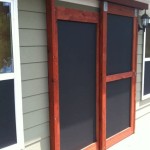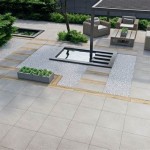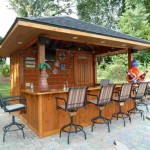How To Mix Mortar For Pointing Patio
Pointing, also known as repointing, is the process of replacing damaged or deteriorated mortar between bricks, stone, or other masonry units. This essential maintenance task not only improves the aesthetic appeal of your patio but also safeguards the structural integrity of the entire structure. While professional contractors can handle this task, many homeowners find it a manageable DIY project, particularly when it comes to pointing a patio. This article will delve into the process of mixing mortar specifically designed for pointing a patio.
Understanding Mortar Types
Mortar is a crucial building material used for bonding masonry units together. It's a mixture of cement, sand, and water, with various additives to enhance properties like workability and durability. For pointing a patio, it's essential to use the appropriate type of mortar:
- Type N Mortar: This general-purpose mortar is suitable for most exterior applications, including patios. It offers good strength and workability, making it suitable for both pointing and laying new bricks.
- Type S Mortar: This stronger mortar is ideal for areas exposed to significant stress, like retaining walls or heavy loads. However, it can be less workable than Type N, making it potentially more challenging for pointing.
- Type M Mortar: This high-strength mortar is often used in demanding environments, like high-rise buildings, and is generally not recommended for pointing patio bricks due to its reduced workability.
When selecting the right mortar type for pointing your patio, consider factors like the existing mortar, the age of your patio, and the expected weather conditions. For most patio pointing projects, Type N mortar is the ideal choice.
Mixing Mortar for Pointing
Mixing mortar for pointing requires precision to ensure proper consistency and workability. Here's a step-by-step guide to achieving the right mix:
- Gather your materials: You'll need mortar mix (Type N for patio pointing), clean water, a wheelbarrow or mixing tub, and a shovel or trowel.
- Prepare the mixing area: Ensure the mixing area is clean and level. This will prevent foreign materials from contaminating the mortar.
- Measure the mortar mix: Follow the manufacturer's instructions for the correct proportion of mortar mix to water. Typically, a 3:1 or 4:1 ratio of dry mortar mix to water is recommended for pointing.
- Add water gradually: Pour the measured water into the mixing container and slowly add the dry mortar mix. Avoid adding too much water at once; aim for a gradual, even incorporation.
- Mix thoroughly: Using a shovel or trowel, thoroughly mix the ingredients until a smooth, consistent consistency is achieved. The mortar should be workable but not too wet or watery. A good test is to grab a handful of mortar; it should hold its shape but easily fall apart when you release your grip.
To ensure proper workability, it's crucial to avoid over-mixing the mortar. Overmixing can lead to a reduction in strength and workability. It's best to mix small batches enough for immediate use and avoid mixing large amounts of mortar that may dry out before being used.
Pointing Techniques
Once the mortar is mixed, you can begin the pointing process. This involves removing the old, deteriorated mortar from the joints between the bricks, cleaning the area, and filling the joints with fresh mortar. Here are some key points to remember:
- Remove old mortar: Carefully remove the old, loose mortar using a pointing trowel and a hammer. Be sure to remove enough to create a clean, deep groove for the new mortar.
- Clean the joints: After removing the old mortar, use a stiff brush or wire brush to clean the joints thoroughly. Remove any dirt, debris, or loose particles. This will ensure proper adhesion of the new mortar.
- Apply the new mortar: Using a pointing trowel, fill the cleaned joints with fresh mortar. Press the mortar firmly into the joints, ensuring it is fully compacted and flush with the brick surface.
- Tooling the mortar: Once the mortar has set slightly, use a pointing tool or a trowel to create a smooth, even finish. Different tooling techniques can achieve various finishes, including flush, concave, or convex.
- Clean up: After tooling, use a damp sponge or rag to clean up any excess mortar. Be careful not to disturb the freshly applied mortar.
Remember, the process of pointing a patio can be time-consuming and require patience. It's best to work in manageable sections and allow sufficient drying time before proceeding to the next section. Proper preparation, consistent mixing, and meticulous application will ensure a successful pointing project that enhances the beauty and longevity of your patio for years to come.

How To Mix Up Mortar For Patio Pointing In 6 Mins

Patio Slab Pointing With Mortar 3 Diffe Methods

How To Repoint Paving Slabs

How To Point A Patio An Easy 5 Step Guide Paving Pointing

Patio Slab Pointing With Mortar 3 Diffe Methods

Pointing Patios And Paving Slabs Grouting N Stone Flags

Julian Cas S Diy Blog Archive Repointing Patio Slabs How To What Use Where Buy

Jointing And Pointing For Stone Paving Dry Grouting Pavingexpert

How To Re Point Paving Slabs

Patio Slab Flags Guide For Beginners From Cleaning Prep Pointing And Tools
Related Posts








